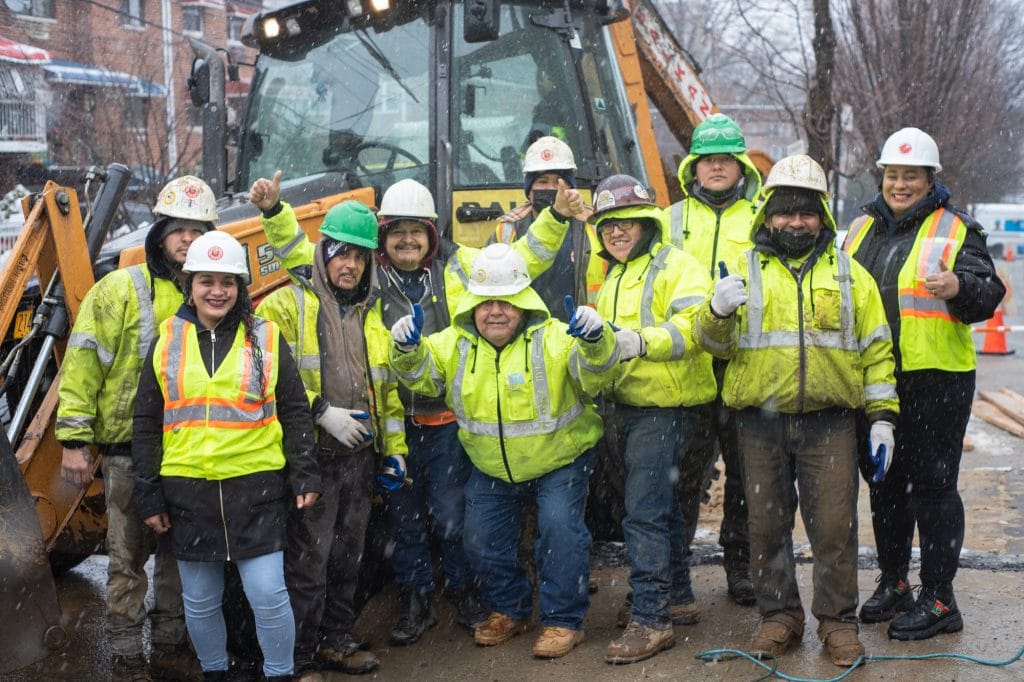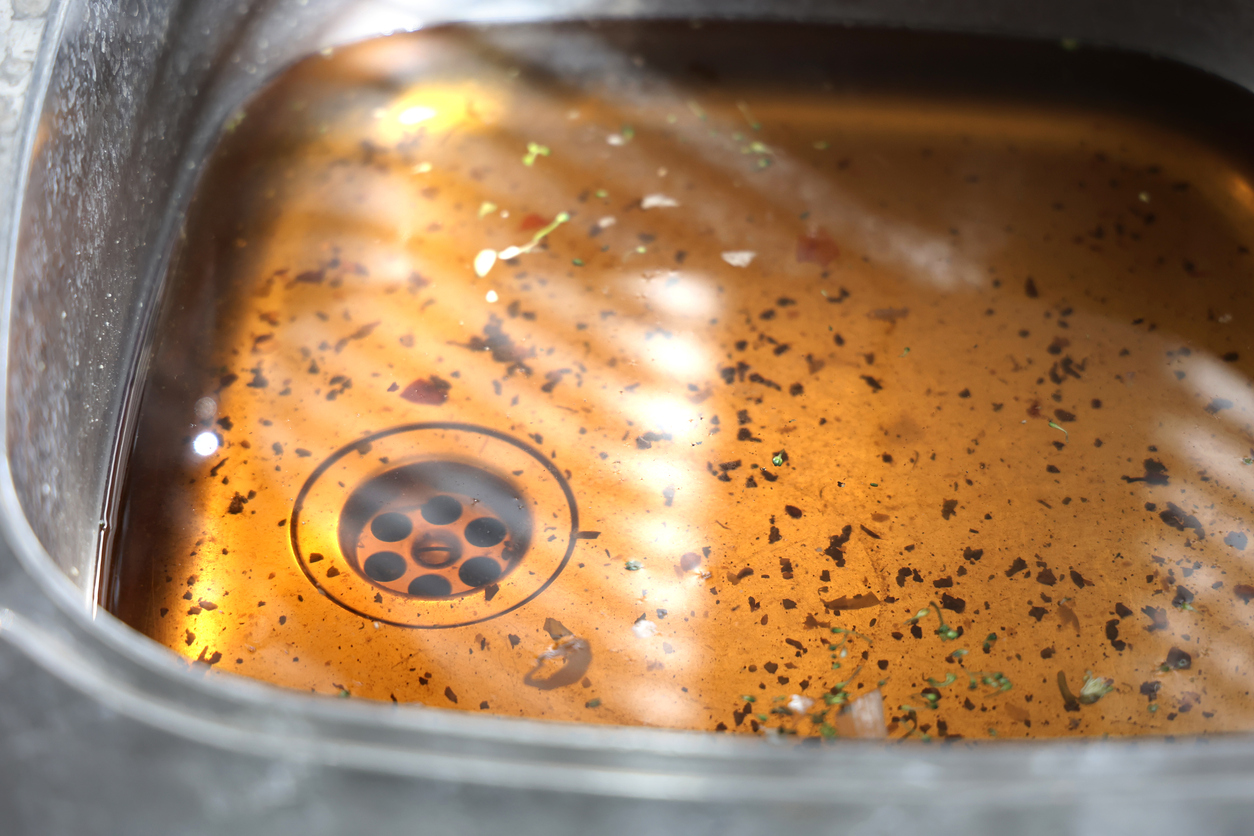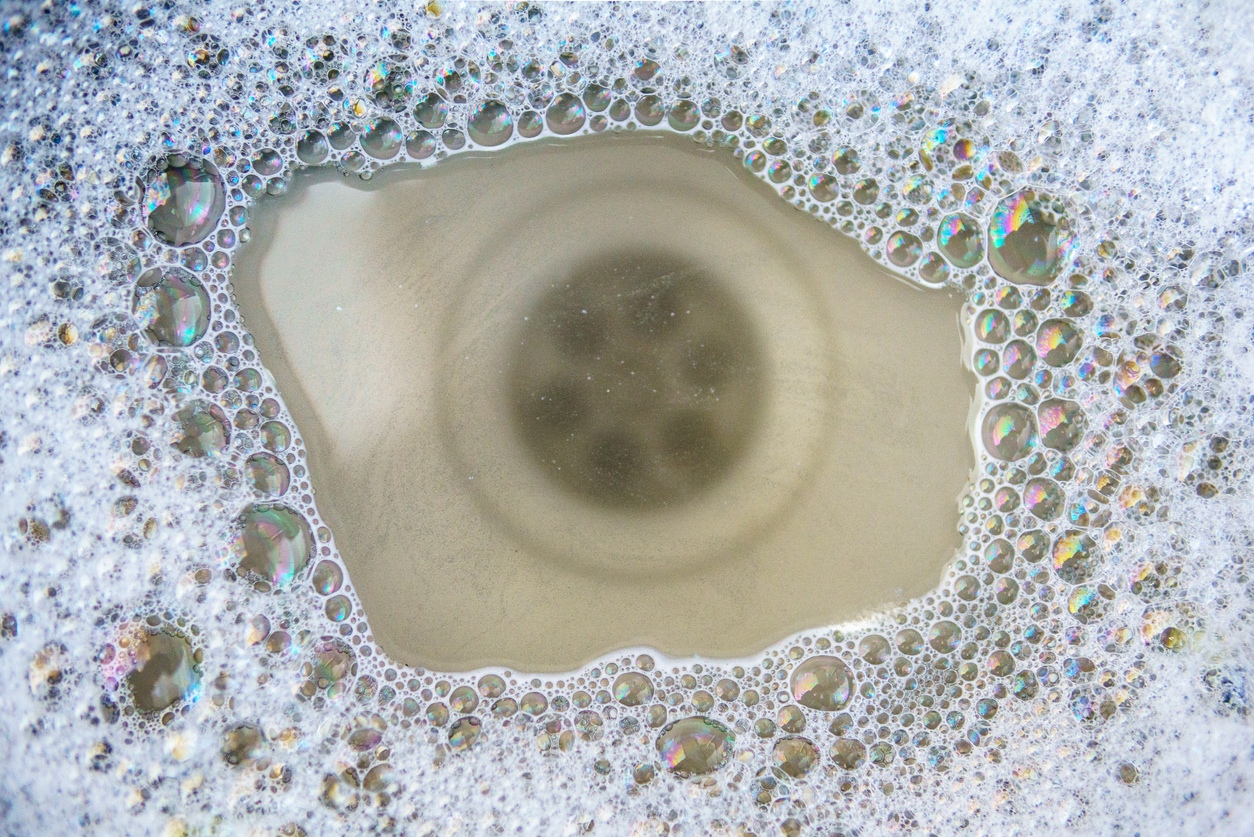To prevent wastewater or surface water from flooding the basement, a water-draining plumbing fixture is placed at the lowest spot in the floor. That fixture is commonly known as a floor drain. From time to time a floor drain backup can occur. Because water flows from higher to lower ground by the force of gravity, a small area surrounding the floor drain is usually designed with some slope to allow water to easily flow into the drain. A floor drain receptacle can be either round or square, and always has a cover grating made of a composite plastic or metal. The size of a floor drain varies from around 6 inches to 12 inches, depending on how wide the floor area is, or how much surface water the room may be subjected to.
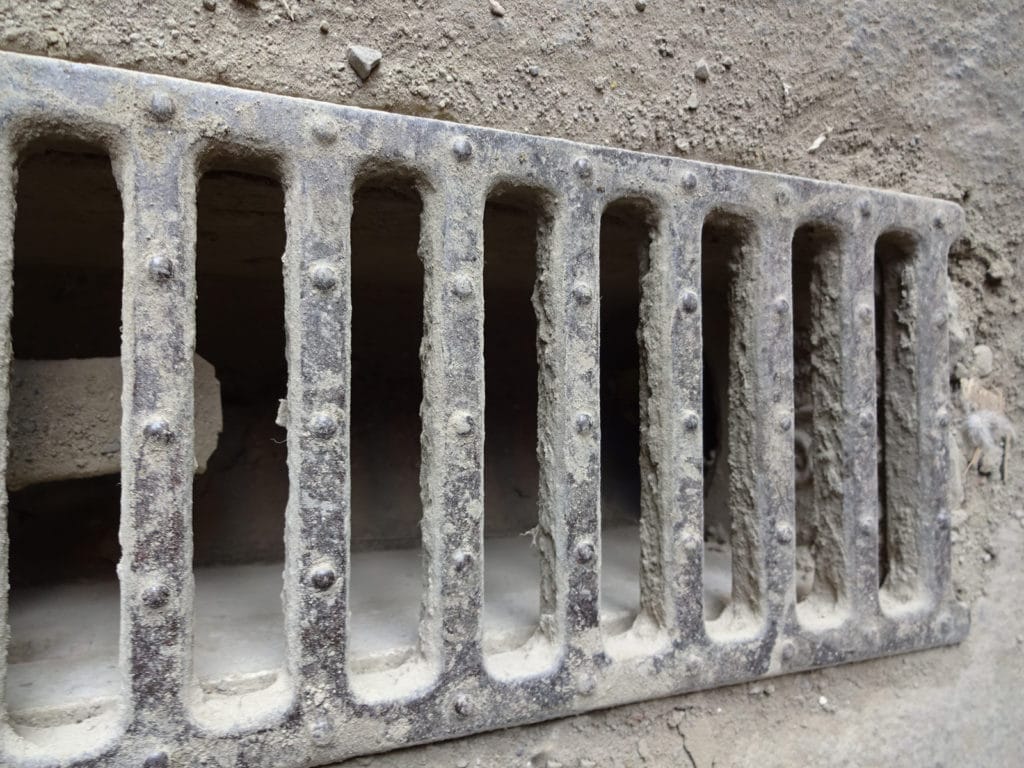
Without the strainer or grate cover, a floor drain will just look like a big hole in the floor. Besides preventing large pieces of debris, or hard physical objects from entering the drain, the strainer also prevents physical injury. The cover can also stop unwanted pests, such as rodents. A strainer with a small grating can act as a barrier for a lot of small objects including gravel, but it will restrict the flow of water and make it drain slowly. Bigger grating openings allow for drains to operate more quickly. But larger grating openings require more maintenance to clean debris from the trap, or the drain sump. A sump full of debris will lead to a floor drain backup.
Where a Floor Drain Is Located
A typical residential basement has at least one floor drain, usually located near water fixtures such as a hot water heater, or clothes washer. The basement in a typical commercial building needs more floor drains because it has to handle a potentially larger volume of wastewater. A floor drain is also commonly found in a laundry room, shower room, basement or commercial kitchen, swimming pool, base of a stairwell, and many restrooms.
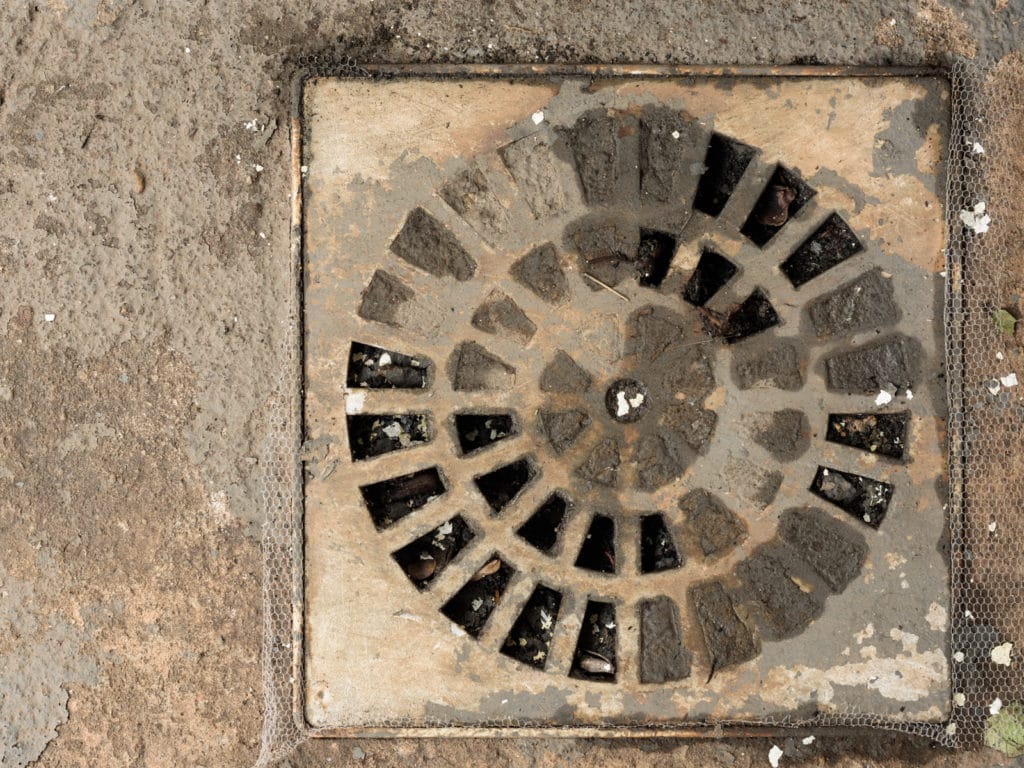
A garage, particularly those used for automotive repair, needs a large floor drain to get rid of grease and fuel spilled on the floor. Instead of using residential-grade round or small square strainer, a floor drain in a garage is usually made of a narrow yet long trench in the floor (trench drain). Commercial garages may require an oil or grease separator. It is more difficult and expensive to install, but a properly designed commercial floor drain works best to control not only water, but also chemicals, oil, grease, or petroleum spills. A trench drain, or typical floor drain, intended for rain water may lead to a dry well. From which the wastewater will be absorbed into the ground.[box type=”info”] A sewer backup can be deceiving. Because a floor drain is located at the lowest point in a drain system, it is the first place a backup will be visible, but not necessarily the point of the clog. Typically waste water backing up out of a floor drain is not a floor drain backup. In most cases water gurgling out of a floor drain is caused by a clog further down the line of your house drain system.[/box]
How a Floor Drain Is Connected To Plumbing
In any room, except a garage with a trench drain, a floor drain is connected to the plumbing system. If proper pitch is not available a sump pump may have to be utilized. A floor drain has a sump pit underneath the grating. The piping usually connects it to the main house drain. At some point a trap is usually installed to block sewer gases, and to catch unwanted objects. A main house drain sump pit is a hole located near the exit point to the city connection. A typical size is 2 feet deep and a minimum of 18 inches and eventually out to the public sewer.
When a sump pump is required, it may be located above the bottom of the sump pit. As the pit fills with enough wastewater, the sump pump automatically turns on and pumps the water out through a pipe that drives the water away from house foundation, and off the floor. The outlet pipe has a check valve installed that prevents the water from flowing back into the pit. A sump pump is typically required for a floor drain when there is a lack of pitch, of when it is used for dewatering when ground water is present.[box type=”info”] Perhaps the most common problem with a sump pump involves the float switch. In many cases the pump and switch are routinely under water, or surrounded by silt or debris. Manually lifting and lowering the float will ensure it is moving freely, and powering up the pump. Cleaning out the sump for a pump periodically is also advised.[/box]
How an automatic sump pump works
A modern sump pump is operated automatically by either a pressure sensor or float sensor. A sump pump equipped with a pressure sensor relies on the pressure generated by water inside the sump pit. As it reaches the threshold, the pump activates and does its job. With a float sensor, there is a buoyant ball that always floats above wastewater. When the water reaches a certain height, the buoyant ball moves up and operates a lever/arm that turns on the pump. A manually operated sump pump is still available, but it is not very common or practical. Those that work automatically usually have options for manual activation, too. In case the sensor fails, a homeowner can still use the sump pump.
Why a Floor Drain Backup May Occur
There are at least three common problems to cause a floor drain backup: clogging, poor maintenance, and sump pump failure. Even when you have a fine grating, small items such as hair and debris can accumulate under the strainer over time. Buildups of grease and soap are also common, and they are more difficult to remove because they tend to harden after a while. Once hardened, you have solid a blockage which cannot be removed easily unless you use a spinning blade on a motorized drain cleaning machine, or high-powered hydro-jet.
1. Cleaning and maintenance
Another common floor drain issue is if the sump under the grating is not cleaned out periodically. If the sump fills with debris, it will cover over the exit pipe. In these cases the pipe itself may not even be clogged, the sump might just have to cleaned out. This can be done by hand. Cleaning any sump for a floor or area drain is typically required more often in the Fall, but it is always a good idea to calendar regular maintenance. As mentioned previously the grating and screen for the grating, if one is present, must be cleaned periodically as well.
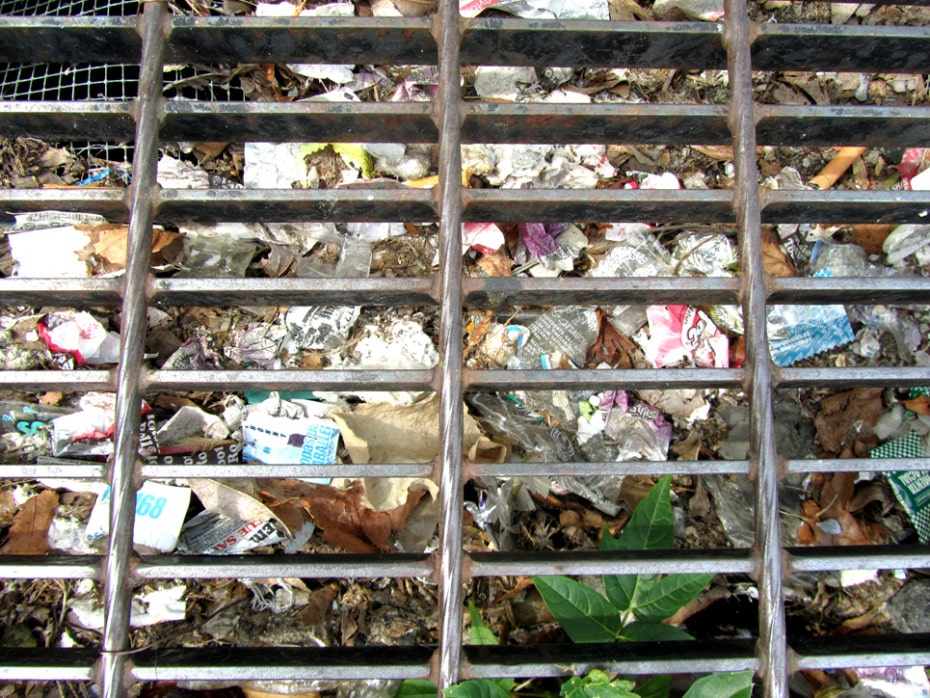
2. Sump pump failure
A sump pump is a piece of mechanical equipment, and not invulnerable to damage. The check valve on the outlet pipe can fail, but you can prevent it by periodic maintenance or replacement. You don’t have to wait until it is broken to replace the valve. Improper installation of sump pump can cause floor drain backup, too. For example, you use a insufficiently sized or powered sump pump for a large sump pit. Although the pump can still work, you force it to work harder than it is designed for, reducing its useful lifespan.
3. Drain pipe failure
Drain pipe damage is not common, but it can happen. When the pipe that leads from floor drain to the sump pit or the main house drain, cracks, the newly created opening will be the gateway for debris, dirt, or the pipe itself dislodging. This situation requires extensive repair best left to a professional sewer repair company.
How a Floor Drain Backup Is Cured
The most practical way is to call a professional. An experienced plumber will clean any clogging and check the overall plumbing system to diagnose potential problems. If you want to take a crack at attending to the floor drain backup yourself, start with these two tips:
-
Removing the clog
To prevent a backup due to small things such as hair or debris, many floor drains are equipped with a backflow preventer. It is usually in the form of buoyant ball that flows above water under the strainer. Remove the strainer and backflow preventer to gain access to floor drain trap and to clean the clog.
-
A homemade Cleaning Solution
You can also pour a homemade cleaning solution into the floor drain to help flush away grease or soap in the pipe. The first step is to pour about a quart of boiling water to help soften accumulation of grease. Let the boiling water soak for about 10 minutes before you flush the pipe again with a box of baking soda. Next, pour a bottle of white vinegar into the floor drain. This mixture is a powerful cleaning solution, and readily available. After the white vinegar, flush the drain once again with another quart of boiling water.
Like all drain systems, a floor drain works on the principal of gravity. With some simple and routine maintenance it should function trouble free for decades. Even when repairs are needed, they are frequently simple and can be done with common household tools.

